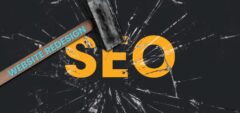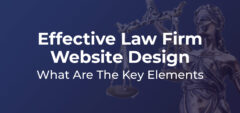Graphic design is the art of creating visual concepts that convey a message to the viewer. But how do graphic designers do this? They create illustrations, advertisements, logos, signs,
The term graphic design covers a number of areas, therefore there are many types of it. We will cover 10 different kinds in this article, with the focus on web design.
1. Corporate design
This type of design is focused on both the branding and the design aspects. When creating a logo, you are creating the image of your brand. So, depending on your logo, your brand can be more or less memorable and recognizable. The choice of font, color,
2. Marketing and advertising design

But your logo isn’t the only thing that presents your brand. No matter if you choose to promote your brand using billboards, online ads, or printed ads, you will need someone who is familiar with the current trends as well as design tools. And that someone is a marketing designer. They know how to create ads that will not only make people stop and look, but also click and purchase.
3. Publication design
This type of design used to be associated with printed media only, but with the more frequent usage of technology and the internet, it now includes online journalism and online magazines, too.
4. Environmental design
Have you ever gotten lost or simply needed a sign to point you in the right direction? This is where environmental design comes into play. It aims to transfer information about surroundings through design. This isn’t its only use though; architecture and interior design are also part of environmental design and they serve to show something beautiful and memorable.
5. Packaging design
As the name suggests, this type of graphic design is concerned with the appearance of products.
There is a number of factors that influence the design of a product, with the target audience being the most important one. Products meant for kids usually have bright colors and cheerful imagery, while products meant for older people to have a larger font. Therefore, the choice of font and color are of significant importance.
What all products have in common is the necessary presence of the brand logo, which makes them recognizable.
6. Book cover design
We should never judge a book by the covers, yet most of us do it anyway. A good cover captures the buyer’s attention while also retaining the essence of the book.
Good covers are usually simple, with 2 or 3 different fonts max for the title, name of the author and the tagline. The image on it is related to the book, but it also captures the genre. If the image shows something different to what the book is about, the reader might be disappointed and feel mislead. This is what makes book cover design especially challenging.
7. Brochure design
Sure, there is a number of websites that offer cheap brochure templates, but if you want your business to stand out, you will probably want to hire a professional brochure designer to do it for you. What they do is properly convey your brand’s personality and your message while maintaining a gorgeous and professional design.
8. Label design
Closely related to packaging design, this type of design is what shows us which ingredients a product contains, who makes it, where it is made, the date of expiration and any warnings. It needs to be informational and detailed, because this information is what makes a customer purchase the product. Additionally, it’s necessary it matches the appearance of the package.
9. Motion design
The name is pretty self-explanatory: motion designers create graphics that are in motion. With the popularity of videos rising in advertising, this is becoming a more and more popular area of design. Besides promotional and tutorial videos, it also includes animated logos, GIFs, banners, and such.
10. Web design
Web design is concerned not only with the appearance of a website but with also everything that is behind the curtain. Web designers, aside from graphic design knowledge, also need to possess coding skills.
HTML, which stands for HyperText Markup Language, presents the way the content of a website is structured. The way this happens is through the usage of a number of elements, such as new paragraph, font size, bold or italic text, images, and such.
CSS, an acronym that stands for Cascading Style Sheets, is the way how HTML elements are displayed on a screen, or more simply put, the style of a website.
But these two tools are not all web designers use. While the job of a graphic designer revolves mostly around creating images, a web designer is more interested in the ways of how different elements such as color, typography, space and alignment can be combined to make a perfect website.
They are skilled in properly aligning images and the text so there’s a certain hierarchy. This is what makes websites easy to navigate and articles easy to read. Hierarchy can also be achieved through the usage of different font sizes and colors. Color theory knowledge is important to know which colors to use and where. This way, the attention of the viewer is turned to the right things, such as buttons and search bars.

They are able to make a website work on every device, no matter if the
An additional challenge for web designers present the constant changes happening in the world of technology. And being able to stay on top of every change and knowing how to solve any problem is a valuable and rare skill.
On top of all of this, web designers also need to be familiar with the newest trends and not fall behind and use outdated designs.
As you can see, graphic design isn’t only about making a quirky image in Photoshop and calling it a day. It covers a number of different areas, each with specific purposes but many things in common: color theory knowledge, font selection, and size, image and text alignment. Web design even includes coding and website optimization, which maybe makes it the most challenging type of graphic design.
Graphic design is a field that has only been on the rise, with brands wanting to increase traffic and spread their influence more and more each day. We hope that this article has been informational and managed to explain what graphic design is all about and what each type of it is focused on.





